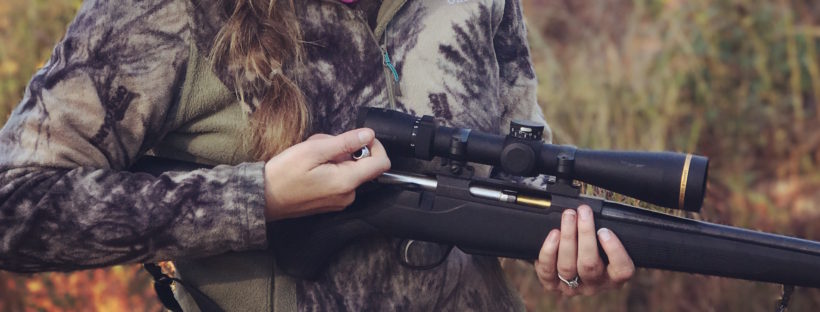The early winter doldrums can be a frustrating time for whitetail hunters, as the bustling rut activity tapers off into the silence of vacant woods and unfired guns. It is often turns off like a light switch: Deer seem to be running everywhere at the height of the rut, and then it’s over as quickly as it began. The peak breeding period may have passed, but that doesn’t mean you can’t have a successful hunt in the post-rut weeks of deer season. Deer are creatures of habit, after all, so a few simple adjustments to your hunting strategies can help you bag a mature buck when you least expect it.
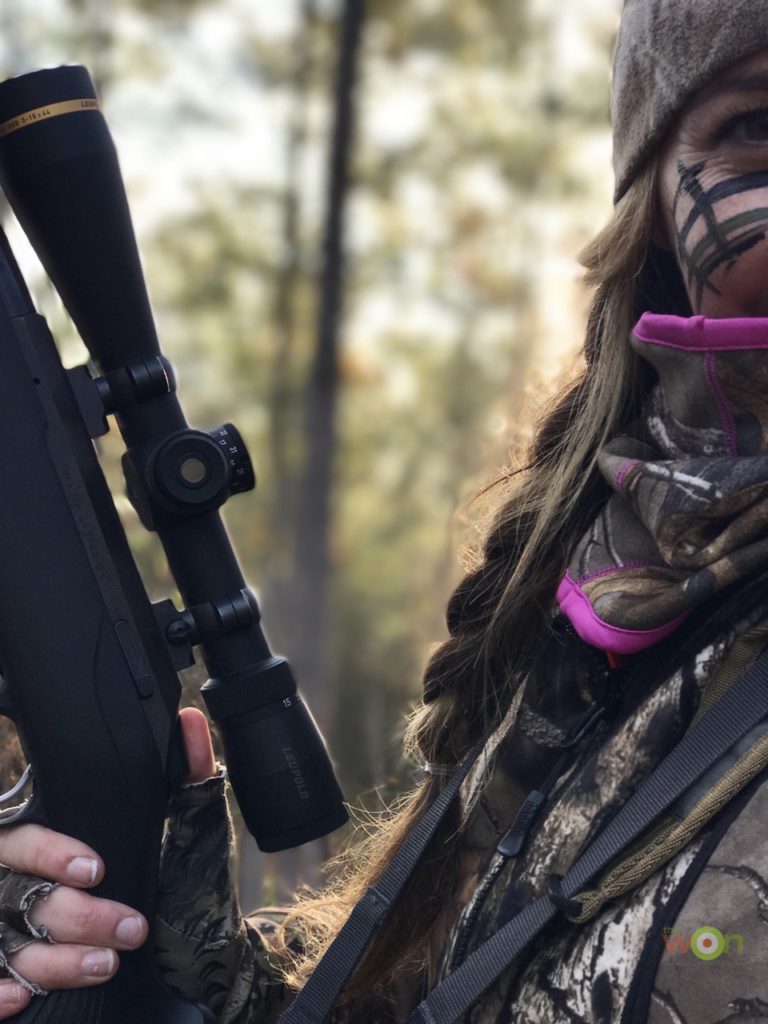
As the days get shorter, a good scope (like my Leupold VX5-HD) will help maximize the length of your hunt.
This article was originally posted at Women’s Outdoor News – click here to check it out!
As the season wears on, deer movement decreases dramatically. Deer are unlikely to move as far during the day, and will stay close to food and water in areas with low pressure and more cover. With this in mind, hunters should use the weather to their advantage. On warmer days, deer will often remain deeper in the woods (and farther from their food source). When the temperature drops, you’ll likely find them on the move and heading to their favorite feeding areas. Watch for those cold fronts, and set up to catch deer leaving their food source early in the morning or coming back to it later in the afternoon or evening.
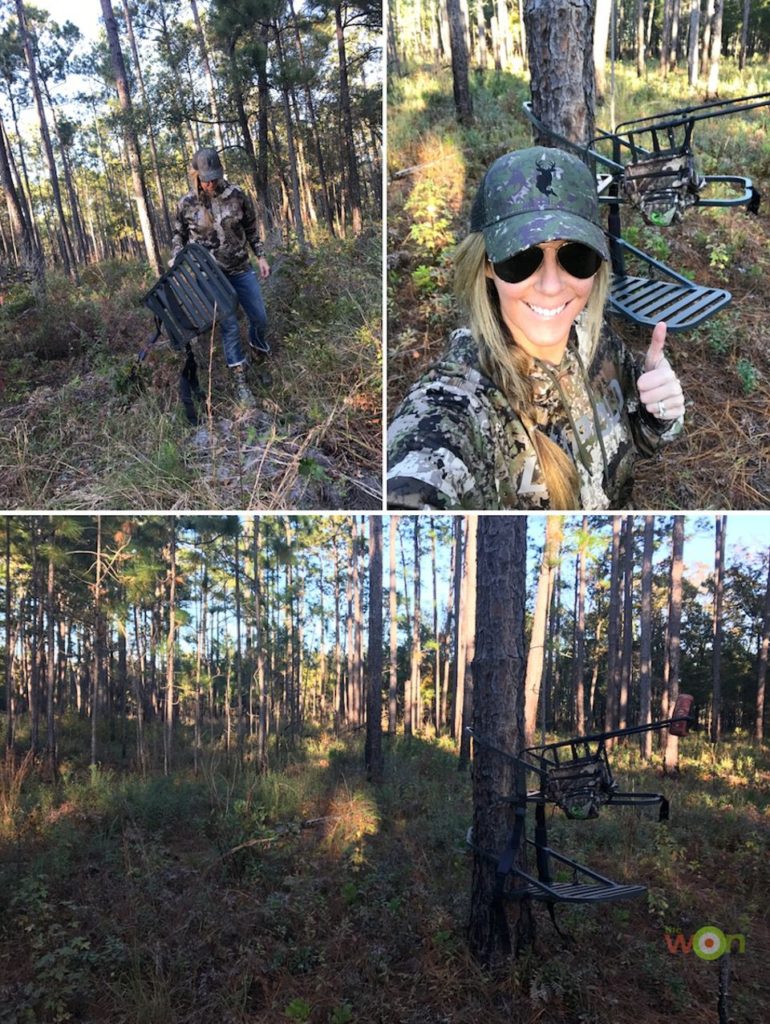
You might be wondering exactly where those feeding grounds are this time of year, especially since summer food plots are likely slim pickings by now. If you’ve put in some fall plots like corn (that you end up flooding for waterfowl, for instance), or soybeans, those are great places to start.
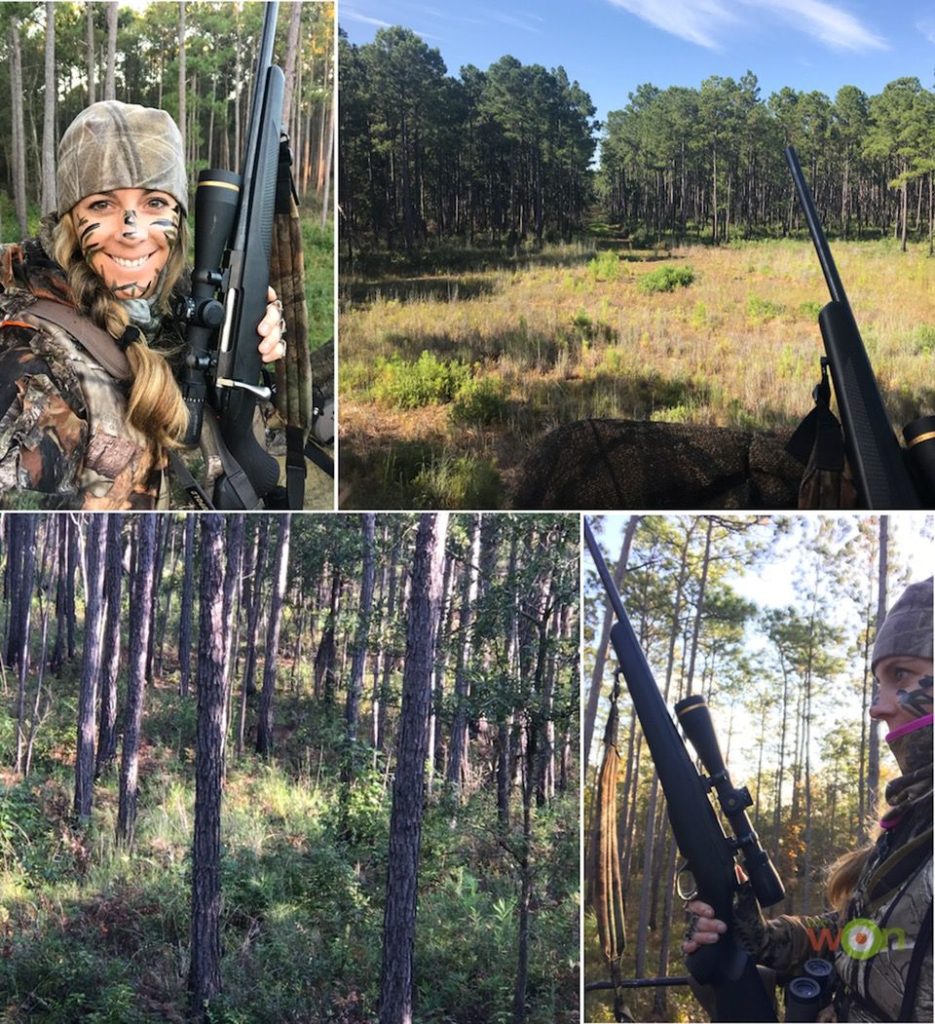
This small plot has been well-loved by deer all season, but hasn’t been nearly as active in recent weeks. Therefore I’ve moved to a heavily wooded area that borders a swamp. Can you spot the doe in the bottom left photo?
But what about those days when movement is down and deer aren’t traveling out to those big fields? We hunters will need to go farther toward the deer instead of waiting for them to come to us. That means finding the secondary food sources—hard mast like white and red acorns. Deer may prefer white acorns, but they certainly won’t pass up red ones when winter sets in. Other promising food sources are browse and brambles, such as berry vines.
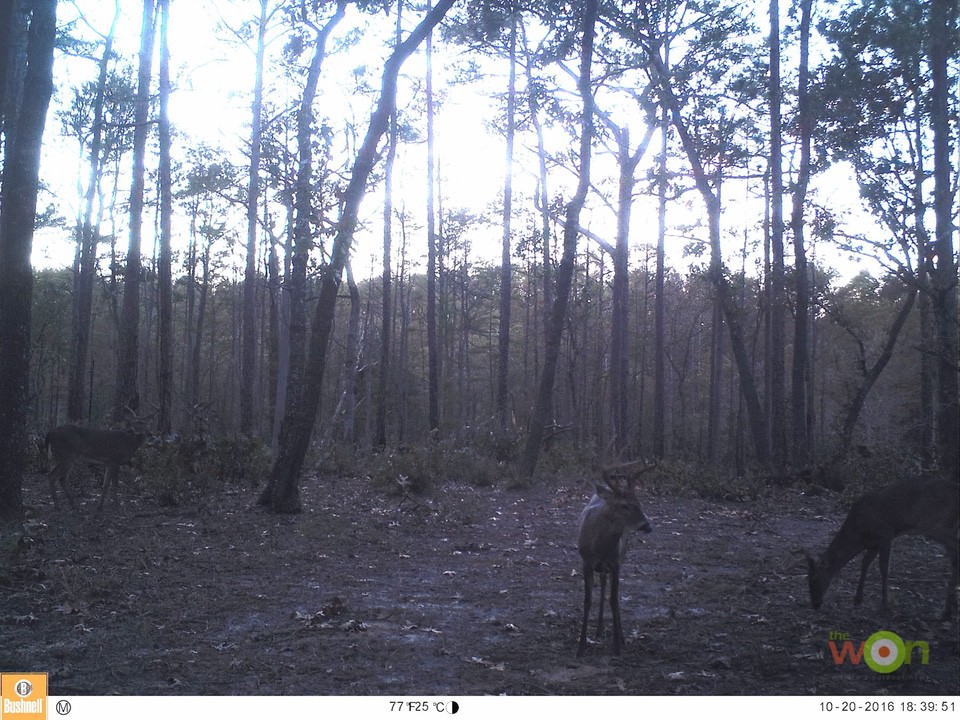
Catching a deer on the way to or from feeding means setting up near a good funnel area. These pinch points are travel zones deer must pass through, so you may not have a lot of room to work with. At this proximity, stand placement and wind direction are key. Using your trail cameras, monitor and pattern the doe herds; bucks will maintain a similar routine and you can cut them off en route. For example, if a group of does habitually feeds in a particular field in the late afternoon or early evening, set up a climber to catch incoming movement—i.e., that buck that follows them, but waits until dark to step into the open. If you’re already set up along his travel corridor, you might spot him moving in before it gets too dark to see. A thermal imaging scope like Leupold’s LTO-Tracker can definitely help you out in those situations.
While early morning and late evening are good hunting times, don’t discount mid-day this time of year. Deer feed every 4 to 6 hours, and if you’ve found a good funnel, it could be worth the stay. You never know when a lone buck might be on the move.
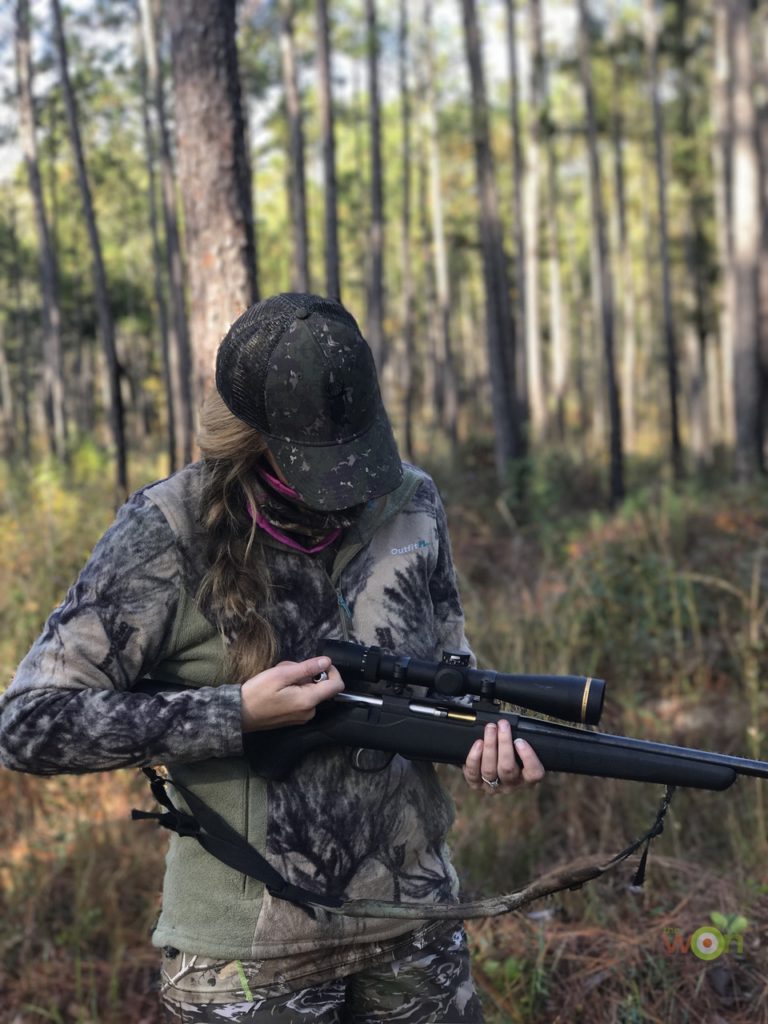
An impromptu early afternoon hunt could yield the trophy buck you’ve been after—you don’t know if you don’t go.
Continue to use the wind to your advantage, just with a few minor revisions. The peak rut is over, but you can catch the “2nd rut” and use it to gain the upper hand. The 2nd rut refers to those weeks when does that have not been bred are still in estrus, and yearling does come into heat late. Bucks will still be using their noses to find these late-estrus does, who move in groups with the does that have already been bred. Also, watch areas of higher ground where bucks might feel they have a good vantage point to watch the doe herd and find their next bout of love.
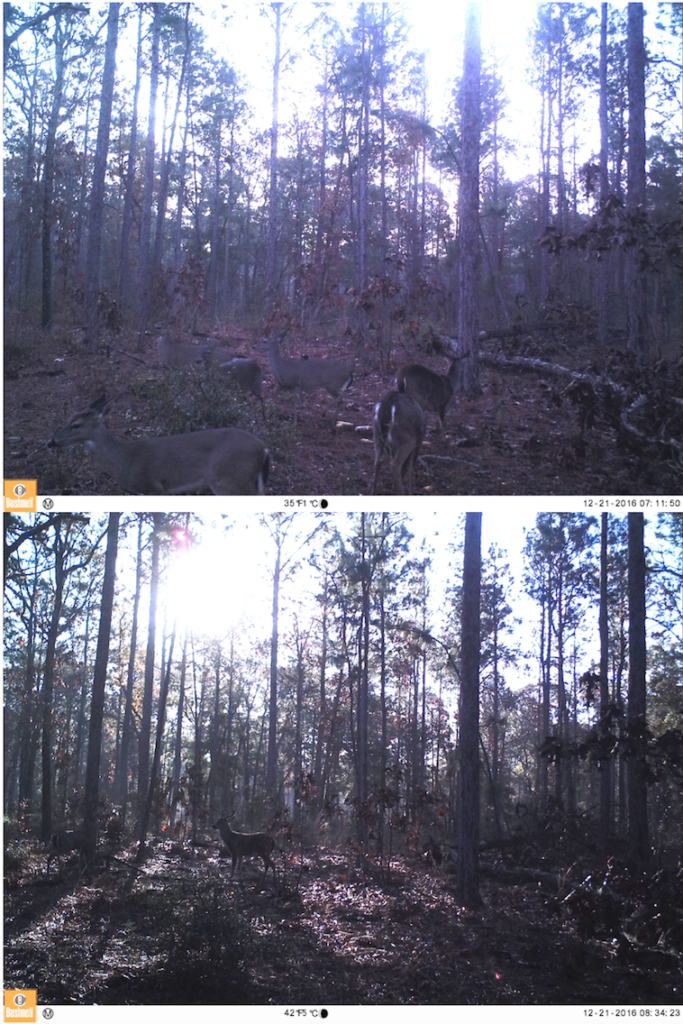
This group of does (including several yearlings) fed for more than an hour; two bucks showed up right behind them.
The benefits of scent and other attractants can be hit or miss in post-rut hunts. Bucks are thinner, worn out, often wounded, and know that self-preservation is increasingly important (particularly with winter looming ahead). Try attaching a dragline dipped in doe estrus to your boot while you walk to the stand, as opposed to simply hanging a wick from a nearby tree branch. A tired buck is more likely to follow a hard scent trail than go searching for a light scent in the distance.
Additionally, bucks have been locking horns and sparring for months now. That means rattling a set of horns might not have the same impact as it did during the peak of the rut. Use them sparingly, but don’t completely discount their attraction. All it takes is one curious buck to lower his guard and let his natural instincts kick in when he hears that “sparring.” With far fewer does left to breed, it’s the biggest boys who will want to make their mark and are still willing to take on another challenger.
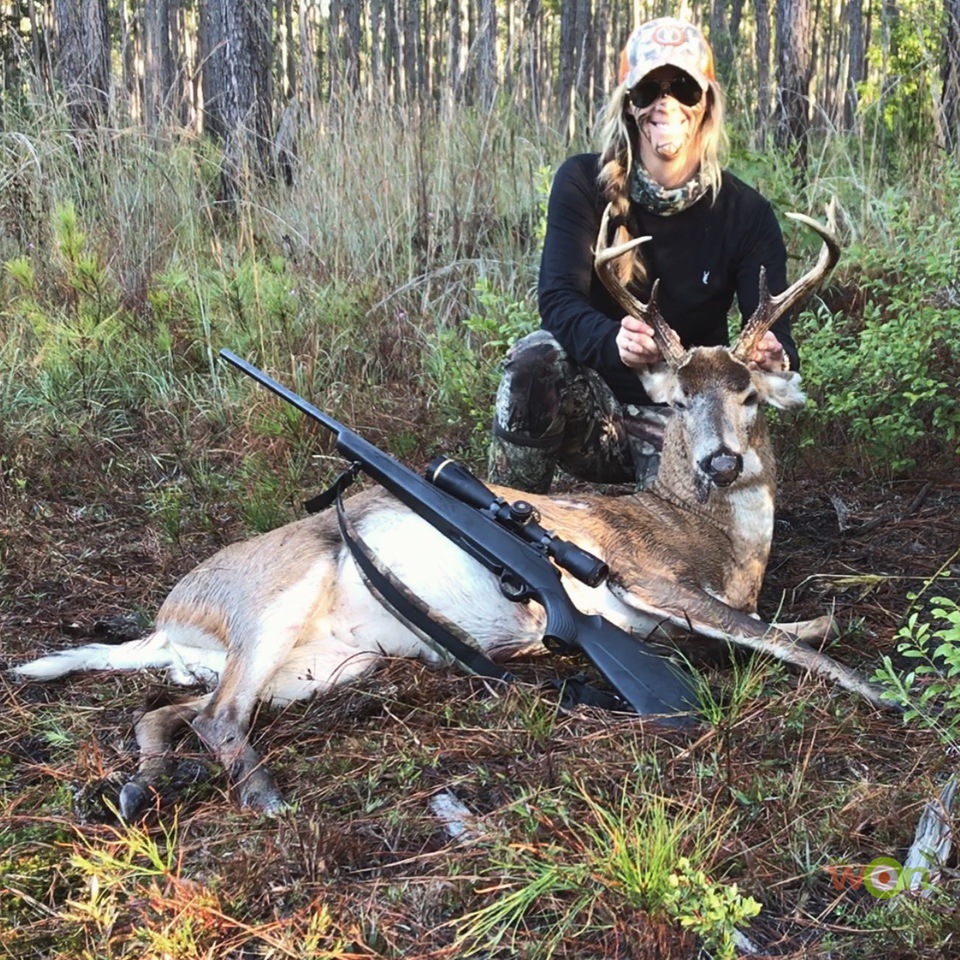
With a little patience and time in the stand, making these simple adjustments in your hunting tactics can help you have a successful hunt. All it takes is being in the right place at the right time, and you’ll have that post-rut buck on the ground.
